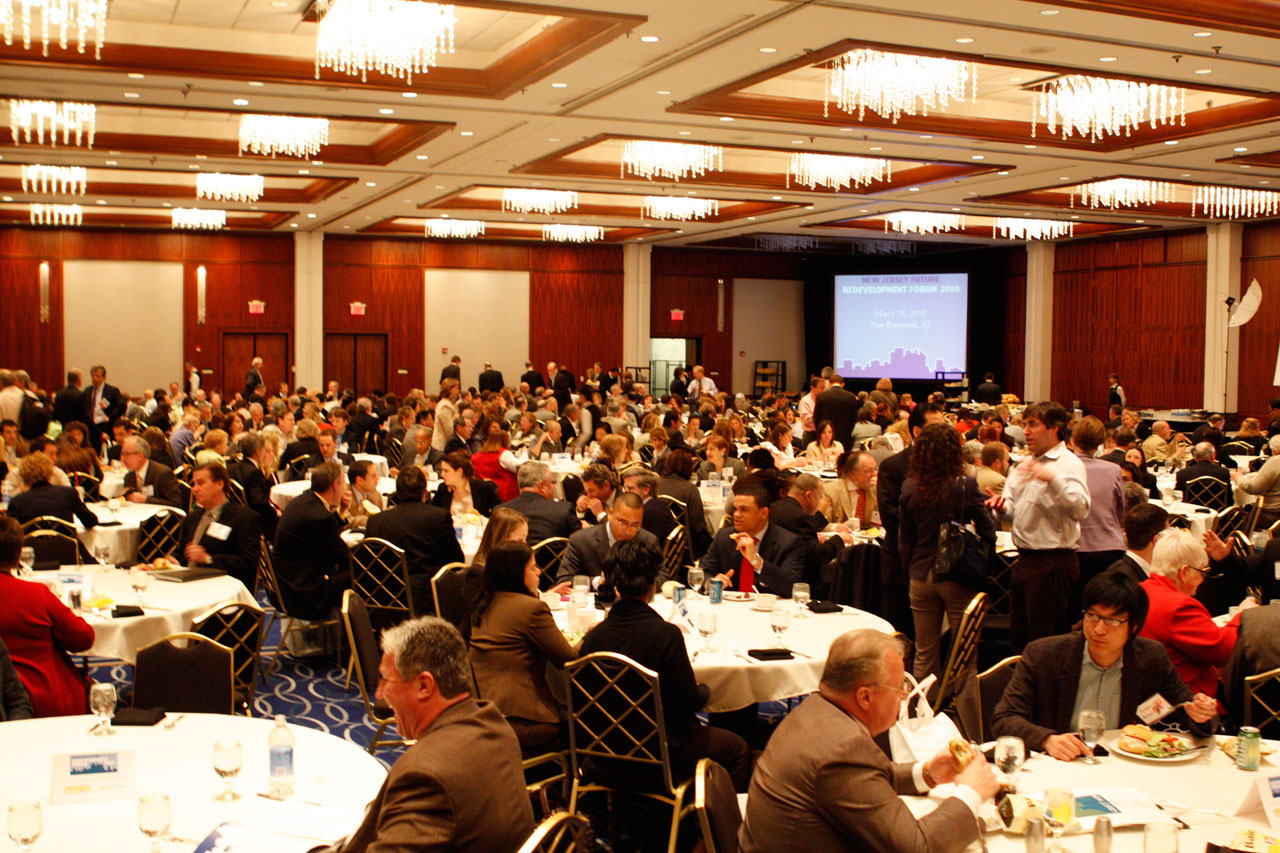New Jersey Future Blog
Sprawl Not Yet a Thing of the Past
July 29th, 2010 by Tim Evans
- Between 2002 and 2007, New Jersey’s rate of land development significantly outstripped population growth: population increased by only 1.1 percent, but the amount of developed land increased by 5.3 percent, nearly five times faster. This is a dramatic change from the 1995 to 2002 time period, when developed acres increased only 1.4 times faster than population.
- New Jersey’s additional land consumption between 2002 and 2007 amounted to more than three-quarters of an acre (0.76) per new resident – almost five times the amount of per-capita developed land (0.16 acres) as of 1986. Recent development in New Jersey has been of a much lower density than the state’s historically compact pattern.
- New Jersey has long been the nation’s most developed state, but new data show it is now more developed than anything else. As of 2007, urbanized land covered 30 percent of the state and surpassed forest land as the dominant land-use type in New Jersey. The Garden State now has more acres of buildings, parking lots and lawns than it has of upland forests – including the Pinelands and all the state’s parks and reserves.
- Since 1986, when these land-use data were first produced, the state’s development footprint has expanded by more than 25 percent, consuming an additional 323,809 acres, or about 500 square miles — an area larger than Cumberland, Monmouth or Morris counties.
Report Points to Urgent Need for Land-Use Reform
Demographers and housing economists have lately been highlighting trends in household size and composition, fertility, and cultural attitudes that are combining to produce renewed demand for housing in compact, mixed-use neighborhoods in urban centers and older, inner-ring suburbs. Indeed, recent statistics on population and building permits at the national level have confirmed this urban revival. The phenomenon is visible in New Jersey as well, with many already-developed places posting their first population gains in decades. In theory, as more households seek to relocate into long-dormant urban and older suburban municipalities, this could ease development pressure on open lands at the suburban fringe, possibly even heralding “the beginning of the end of sprawl,” as an edition of the Rutgers Regional Report earlier in the decade phrased it.
But development pressure at the fringe continues to stubbornly defy such predictions. In fact, according to Changing Landscapes in the Garden State, a joint report issued this week by Rowan and Rutgers universities, the rate of open space loss actually crept upward in the middle part of this decade. Between 2002 and 2007, an average of 16,061 new acres per year were developed, an amount equal to 44 acres (about the size of 33 football fields) each day. This is a seven percent increase over the previous rate of 15,123 acres annually between 1995 and 2002. This sustained pace of land development is even more disquieting in light of New Jersey’s relatively anemic population growth over the same period.
Part of the reason that new land development hasn’t attenuated, even as already-built areas of the state are experiencing renewed population growth, is that so many new homes are being built on substantially larger lots than in the past. Of the new land developed into residential uses between 2002 and 2007, 67 percent was consumed by large-lot development with average lot sizes of between half an acre and two acres.
While the total amount of land being developed annually has drifted up slightly, the complexion of the lands being lost to development has changed dramatically. Between 1986 and 1995, the state lost an average of 9,485 acres of agricultural land per year, but less than half that amount (4,300 acres) of forest land. For the 2002-2007 time period, however, the picture is reversed, with agricultural losses declining to 5,711 acres per year, but the annual deforestation rate nearly doubling, to 8,487 acres. The state has gradually been transitioning from building new subdivisions on farm fields to knocking down trees for development. (Still, the total amount of farmland lost since 1986 is greater than the area of Bergen, Mercer, or Cape May County.)
The Rowan-Rutgers study offers a glimpse into what the future might hold, should New Jersey choose not to change the way it uses its land. If new homes continue to be built on larger lots, the landscape will ultimately be dominated by subdivisions and strip malls, even in rural areas. The low-density quality of recent development is a direct product of local zoning regulations that often serve to obstruct the market forces that are otherwise pushing toward more compact development — developers are often the most vocal proponents of higher density. Unfortunately, the thousands of local decisions by planning and zoning boards across the state do not necessarily add up to a statewide optimum; in fact, in the aggregate they can have a detrimental effect, as this report illustrates. A big-picture perspective is needed.
The Pinelands offers an example of how it is possible to protect New Jersey’s special places and promote sustainable development using a regional plan that guides municipalities, landowners and developers and directs growth to the places that make sense. Fortunately, such a tool exists at the state level – the State Development and Redevelopment Plan, which was created more than 20 years ago to improve decisions about where and how New Jersey grows. Unfortunately, the State Plan has been a purely voluntary document that has received only sporadic support from state government over its two decades. If New Jersey wants to redirect growth into already developed areas, thereby helping to revitalize cities, lower infrastructure costs, capitalize on the existing transportation network, and stem the loss of farmlands and forests – that is, if the future is to look like something other than a continuation of the recent past – it is time to start taking state planning seriously.
Related Posts
Tags: New Jersey, Open Space, Redevelopment, Smart Growth, State Planning

















[…] blog Garden State Smart Growth picks out some of the report's […]
The period 2002-2007 is now a recession ago. Development has largely stopped for the past two years. This is an opportunity to start it again in urban areas instead. We need to figure out how to induce developers to redevelop, build new housing in more urban areas, especially in mixed-use buildings, retail stores on the ground floor and apartments above. Increasing the density of retail in small urban centers will attract more people to shop there, because they can satisfy more needs in one trip.
The biggest problem in preventing sprawl is the doctrine that land cannot be zoned into inutility, it must be zoned for some sort of development, and even at 6 acres/lot developers think they can make money out of it, by building bigger and more expensive houses – which are not what we need. Perhaps when S-1 or other replacement is passed, requiring 10% of new housing to be affordable, towns can inhibit developers by rigidly requiring this is even the highest-value development. After all, we would just be carrying out the will of the Legislature!
[…] will allow New Jersey to accommodate new residents without perpetuating the low-density sprawl that has defined growth in New Jersey in recent […]